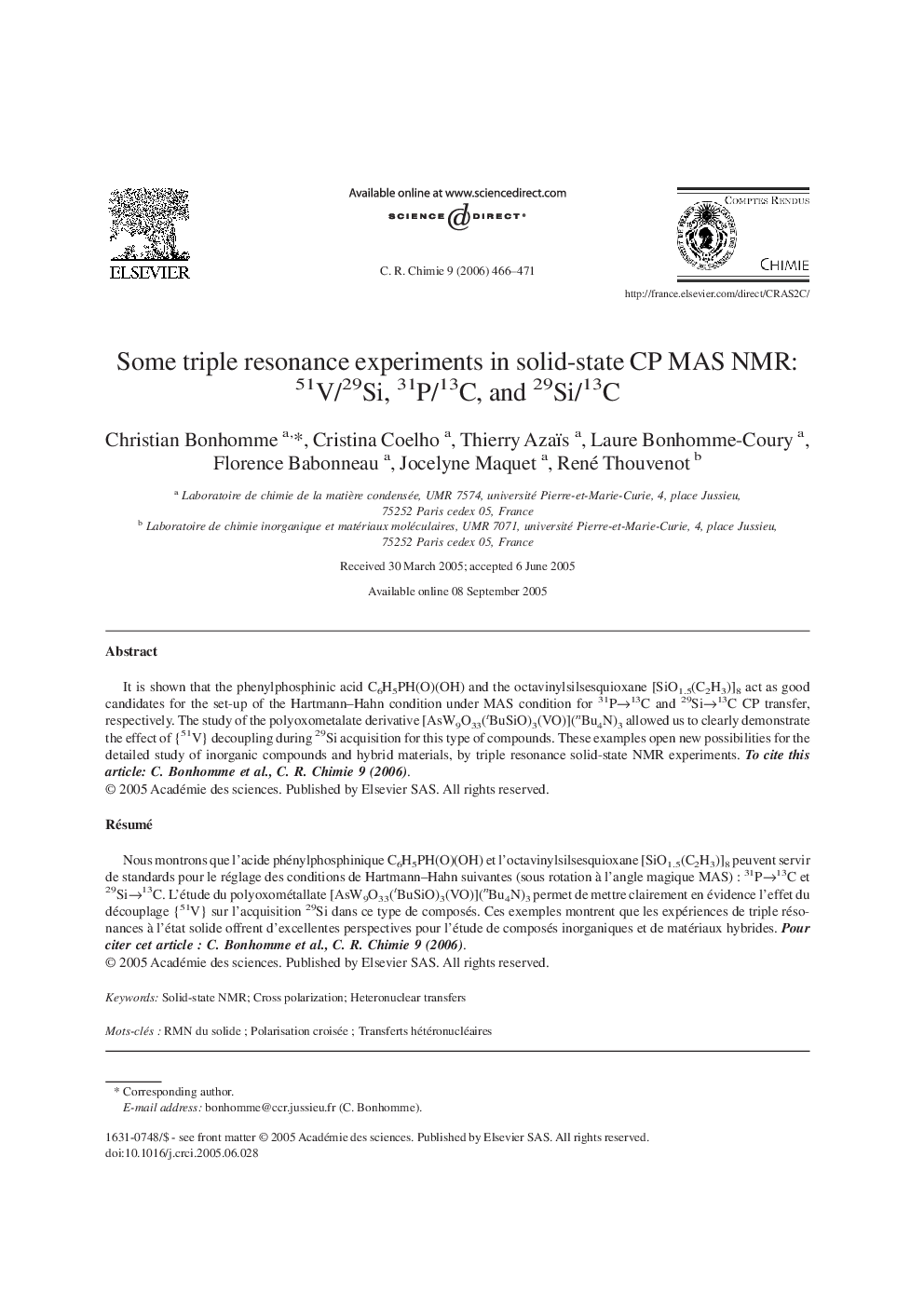| Article ID | Journal | Published Year | Pages | File Type |
|---|---|---|---|---|
| 171745 | Comptes Rendus Chimie | 2006 | 6 Pages |
It is shown that the phenylphosphinic acid C6H5PH(O)(OH) and the octavinylsilsesquioxane [SiO1.5(C2H3)]8 act as good candidates for the set-up of the Hartmann–Hahn condition under MAS condition for 31P→13C and 29Si→13C CP transfer, respectively. The study of the polyoxometalate derivative [AsW9O33(tBuSiO)3(VO)](nBu4N)3 allowed us to clearly demonstrate the effect of {51V} decoupling during 29Si acquisition for this type of compounds. These examples open new possibilities for the detailed study of inorganic compounds and hybrid materials, by triple resonance solid-state NMR experiments. To cite this article: C. Bonhomme et al., C. R. Chimie 9 (2006).
RésuméNous montrons que l'acide phénylphosphinique C6H5PH(O)(OH) et l’octavinylsilsesquioxane [SiO1.5(C2H3)]8 peuvent servir de standards pour le réglage des conditions de Hartmann–Hahn suivantes (sous rotation à l’angle magique MAS) : 31P→13C et 29Si→13C. L’étude du polyoxométallate [AsW9O33(tBuSiO)3(VO)](nBu4N)3 permet de mettre clairement en évidence l’effet du découplage {51V} sur l’acquisition 29Si dans ce type de composés. Ces exemples montrent que les expériences de triple résonances à l’état solide offrent d’excellentes perspectives pour l'étude de composés inorganiques et de matériaux hybrides. Pour citer cet article : C. Bonhomme et al., C. R. Chimie 9 (2006).
